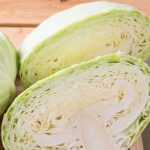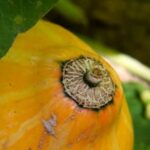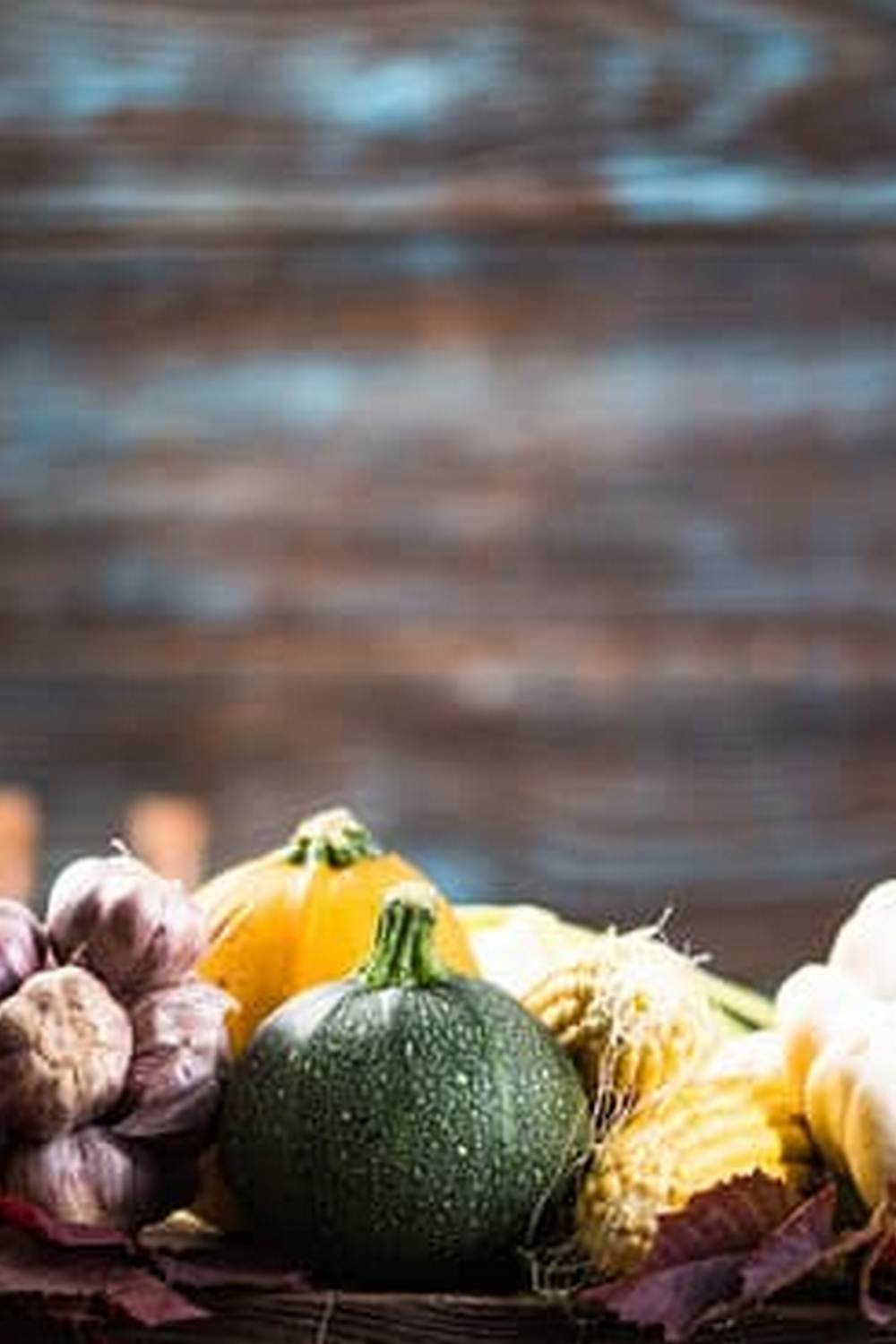Late spring is a crucial time for vegetable gardeners as it marks the transition from cooler weather to warmer temperatures, creating optimal conditions for plant growth. In this article, we will explore essential late spring vegetable gardening tips to help you make the most of this period and ensure a bountiful harvest.
From choosing the right vegetables to preparing the soil, planting techniques, pest control strategies, and harvesting tips, we’ve got you covered on all aspects of late spring vegetable gardening.
Choosing the right vegetables for late spring planting is key to success in your garden. Whether you prefer leafy greens like lettuce and spinach, root vegetables such as carrots and radishes, or vine crops like cucumbers and squash, selecting varieties that thrive in late spring conditions is essential. By considering factors like sunlight exposure, soil quality, and temperature requirements, you can create a diverse and productive late spring vegetable garden.
Preparing the soil is another vital step in late spring vegetable gardening. By amending the soil with organic matter like compost or aged manure, you can improve its fertility and structure, providing essential nutrients for plant growth.
Proper soil preparation also helps with water retention and drainage, ensuring that your late spring vegetables have the ideal growing environment. Stay tuned as we delve into more detailed tips on soil preparation along with planting techniques, watering strategies, pest control methods, harvesting advice, and seasonal maintenance for a successful late spring vegetable garden.
Choosing the Right Vegetables for Late Spring Planting
Late spring is a great time to plant a variety of vegetables that thrive in the warmer months ahead. Choosing the right vegetables for late spring planting can ensure a bountiful harvest later in the season. Some ideal options for this time of year include tomatoes, peppers, cucumbers, squash, and beans. These vegetables require warm soil temperatures to thrive and are perfect for planting in late spring.
Warm-Season Vegetables
When selecting vegetables for late spring planting, focus on warm-season varieties that can withstand the rising temperatures of summer. Tomatoes and peppers are popular choices that do well when planted in late spring. Cucumbers and squash also thrive in warm weather conditions. Beans, both pole and bush varieties, are another excellent option for late spring planting.
Quick-Growing Vegetables
For those gardeners looking for fast results, consider planting quick-growing vegetables such as radishes, lettuce, and spinach in late spring. These vegetables have shorter maturity dates, allowing you to enjoy fresh produce sooner rather than later. Radishes can be ready to harvest in as little as three weeks after planting, making them a great choice for a late spring vegetable garden.
Succession Planting
To maximize your late spring vegetable garden space, consider succession planting different varieties of vegetables. This technique involves planting crops at intervals to ensure a continuous harvest throughout the season. For example, you can plant beans every two weeks to stagger their production or sow lettuce seeds every few weeks for a constant supply of fresh greens. Succession planting is a smart strategy to make the most of your late spring vegetable garden.
Preparing the Soil for Late Spring Vegetables
Late spring is a crucial time for gardening enthusiasts to prepare their soil for late spring vegetables. Proper soil preparation sets the foundation for healthy plant growth and bountiful harvests later in the season. Here are some key tips to ensure your soil is ready for late spring planting:
- Test Your Soil: Before planting, it’s essential to test your soil to determine its pH level and nutrient content. This will help you make informed decisions about what amendments are needed to optimize plant growth.
- Add Organic Matter: Incorporating organic matter such as compost or well-rotted manure into the soil can improve its structure, drainage, and fertility. Mix it thoroughly into the top few inches of soil to provide essential nutrients for your late spring vegetables.
- Aerate the Soil: Aerating the soil by loosening it with a garden fork or tiller helps improve root penetration and water absorption. It also allows beneficial microbes to thrive, enhancing overall soil health.
Properly preparing the soil for late spring vegetables sets the stage for a successful growing season. By following these tips, you can create a fertile environment that promotes strong plant growth and abundant harvests. Stay tuned for more late spring vegetable gardening tips to maximize your garden’s potential this season.
Planting Tips for Late Spring Vegetables
Late spring is the perfect time to plant a variety of vegetables in your garden that can thrive in the warmer weather ahead. When it comes to planting late spring vegetables, there are a few key tips to keep in mind to ensure a successful and bountiful harvest. Here are some planting tips for late spring vegetables:
- Choose vegetables that are well-suited for late spring planting, such as tomatoes, peppers, eggplant, cucumbers, and squash.
- Ensure that the soil is properly prepared before planting by loosening it with a garden fork or tiller and incorporating compost or other organic matter to provide essential nutrients for the plants.
- Consider starting your vegetable seeds indoors a few weeks before transplanting them into your garden to give them a head start and increase their chances of success.
It is important to follow spacing recommendations for each type of vegetable when planting in your garden to ensure that they have enough room to grow and receive adequate sunlight and airflow. Additionally, consider using companion planting techniques to maximize space and promote healthy growth among different types of plants. By following these planting tips for late spring vegetables, you will set yourself up for a productive and thriving garden season.
- Properly prepare the soil by amending it with compost or fertilizer before planting.
- Plant transplants at the appropriate depth according to each plant’s specific requirements.
- Water newly planted vegetables thoroughly immediately after planting and continue to provide consistent moisture throughout the growing season.
Remember that each vegetable may have slightly different planting requirements, so be sure to read up on specific guidelines for each type of plant you plan to include in your late spring garden. With proper planning and care, you can enjoy a successful late spring vegetable garden full of delicious homegrown produce.
Watering and Mulching Techniques for Late Spring Vegetables
Late spring vegetable gardening can be a rewarding endeavor, as it allows you to enjoy a bountiful harvest during the warmer months. When it comes to watering and mulching techniques for late spring vegetables, there are key practices to keep in mind to ensure the health and productivity of your garden.
One important tip is to water your plants deeply but infrequently, aiming for about an inch of water per week. This encourages deep root growth and helps plants become more resilient to drought conditions.
In addition to proper watering, mulching is another essential technique for late spring vegetables. Mulch helps retain moisture in the soil, regulates soil temperature, suppresses weeds, and provides nutrients as it breaks down. Organic mulches such as straw, compost, or shredded leaves are ideal choices for late spring vegetable gardens. Applying a layer of mulch around your plants can also prevent soil compaction and erosion during heavy rainfall.
Another useful tip for watering and mulching late spring vegetables is to monitor the moisture level regularly. Check the soil by sticking your finger into the ground; if it feels dry an inch below the surface, it’s time to water. Avoid wetting the foliage when watering, as this can lead to disease issues. By following these watering and mulching techniques, you can promote healthy plant growth, increase yields, and maintain a thriving late spring vegetable garden.
| Watering Techniques | Mulching Strategies |
|---|---|
| Water deeply but infrequently | Use organic mulches like straw or compost |
| Monitor soil moisture regularly | Avoid wetting foliage when watering |
Pest Control Strategies for Late Spring Vegetable Gardens
Late spring is a crucial time for vegetable gardening, as it marks the transition between the cooler temperatures of spring and the warmer days of summer. With the right care and attention, late spring can be a bountiful season for your vegetable garden. In this section, we will discuss some effective pest control strategies to ensure that your late spring vegetables thrive and remain free from harm.
One of the most important steps in pest control for late spring vegetable gardens is to regularly inspect your plants for any signs of infestation. Look out for common pests such as aphids, caterpillars, and spider mites that can damage your crops. By catching these pests early on, you can prevent them from causing significant harm to your plants.
In addition to regular inspections, consider implementing companion planting techniques as a natural way to deter pests in your late spring vegetable garden. Certain plants have properties that repel insects or attract beneficial insects that feed on pests. For example, marigolds are known to repel nematodes, while herbs like basil can help keep mosquitoes at bay. Experiment with different combinations to find what works best for your garden’s unique needs.
| Pest Control Strategy | Benefits |
|---|---|
| Companion Planting | Natural pest deterrent |
| Row Covers | Protects plants from insect damage |
| Handpicking Pests | Eradicates harmful insects without pesticides |
Another effective pest control strategy for late spring vegetable gardens is the use of row covers. These lightweight fabric covers create a physical barrier between your plants and potential insect intruders while still allowing sunlight and water to reach your crops. Row covers are particularly helpful in preventing cabbage worms, flea beetles, and other flying pests from laying eggs on your vegetables.
Lastly, if pest infestations become severe despite your best efforts, consider using organic pest control measures such as neem oil or insecticidal soap as a last resort. These options are safer for both your plants and the environment compared to chemical pesticides but can still effectively combat harmful insects. By combining these pest control strategies with proper care and maintenance practices, you can protect your late spring vegetables and ensure a successful harvest.
Harvesting and Storage Tips for Late Spring Vegetables
Late spring is a rewarding time in the vegetable garden as it brings forth an abundance of produce ready for harvesting. To ensure that you make the most of your late spring vegetable harvest, here are some essential tips for harvesting and proper storage:
Harvesting
When it comes to harvesting your late spring vegetables, timing is crucial. Vegetables such as peas, leafy greens, radishes, and early potatoes should be harvested promptly as they reach maturity to prevent them from becoming overripe or tough. Be sure to check the recommended harvest times for each specific vegetable variety to pick them at their peak flavor and texture.
Storage
Proper storage techniques play a key role in preserving the freshness and quality of your harvested late spring vegetables. Root vegetables like carrots, beets, and potatoes should be stored in a cool, dark place with good ventilation to prevent spoilage. Leafy greens can be stored in a plastic bag with a paper towel to absorb excess moisture before placing them in the refrigerator.
Canning and Freezing
For an extended shelf life of your late spring vegetables, consider canning or freezing them. Vegetables like peas, beans, and corn can be blanched and frozen for later use, while tomatoes can be preserved through canning methods such as making salsa or pasta sauce. This allows you to enjoy the bounty of your late spring garden well into the summer months.
Seasonal Maintenance and Care for Late Spring Vegetable Gardens
Late spring is a crucial time for maintaining and caring for your vegetable garden to ensure a successful growing season ahead. As the temperatures rise and plants begin to flourish, it is essential to stay on top of maintenance tasks to support healthy growth and bountiful harvests. Seasonal maintenance in late spring includes tasks such as weeding, pruning, fertilizing, and monitoring for pests and diseases.
Weeding is especially important during late spring as weeds can quickly overtake your vegetable garden, competing for nutrients and water. Regularly removing weeds by hand or using mulch can help prevent weed growth and ensure that your vegetables have ample space to thrive. Additionally, pruning any overcrowded or damaged plants can improve air circulation and sunlight exposure, reducing the risk of fungal diseases.
Fertilizing is another key aspect of seasonal maintenance in late spring. Providing your vegetables with the right nutrients at the right time can promote healthy growth and increase yields. Organic fertilizers or compost can be added to the soil around your plants, following package instructions for application rates.
Regular monitoring of plant health is also crucial during this time, as early detection of pests or diseases can prevent them from causing significant damage to your garden. By staying proactive with maintenance and care tasks in late spring, you can set your vegetable garden up for success throughout the rest of the growing season.
Conclusion
In conclusion, late spring vegetable gardening can be a rewarding and fruitful endeavor for any gardener. By carefully selecting the right vegetables for late spring planting, preparing the soil properly, and following planting tips, you can set your garden up for success. Remember to water your plants consistently and mulch to retain moisture in the soil, promoting healthy growth and production.
Furthermore, implementing pest control strategies will help protect your late spring vegetables from common threats like insects and diseases. Regularly inspecting your plants for any signs of trouble and addressing them promptly can make a significant difference in the health of your garden. Additionally, knowing when to harvest your late spring vegetables at their peak ripeness and utilizing proper storage techniques will ensure that you enjoy the freshest produce from your garden.
Lastly, don’t forget about seasonal maintenance and care for your late spring vegetable garden. Stay on top of weeding, pruning, and fertilizing tasks to keep your plants thriving throughout the season. With dedication and attention to detail, you can maximize your late spring vegetable garden’s success and reap a bountiful harvest of delicious, homegrown produce. Happy gardening.
Frequently Asked Questions
What Vegetables Can Be Planted in Late Spring?
In late spring, you can plant a variety of vegetables in your garden such as tomatoes, peppers, cucumbers, zucchini, squash, beans, and corn. These vegetables thrive in the warmer temperatures typical of late spring.
How Do I Prepare My Vegetable Garden for the Next Spring?
To prepare your vegetable garden for the next spring, start by cleaning up any debris from the previous season and removing any weeds. It’s also a good idea to amend the soil with compost or fertilizer to ensure it’s nutrient-rich for new plantings. Consider planning out your garden layout and planting schedule ahead of time.
Is It Too Late in the Season to Plant a Vegetable Garden?
It may not be too late in the season to plant a vegetable garden, depending on where you live and what vegetables you plan to grow. Some quick-growing vegetables like lettuce, radishes, and spinach can still be planted in late spring or early summer for a successful harvest before fall arrives.

If you’re looking to get into vegetable gardening, or are just looking for some tips on how to make your current garden better, then you’ve come to the right place! My name is Ethel and I have been gardening for years. In this blog, I’m going to share with you some of my best tips on how to create a successful vegetable garden.





